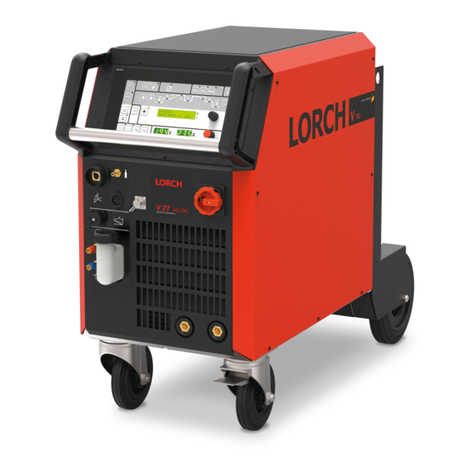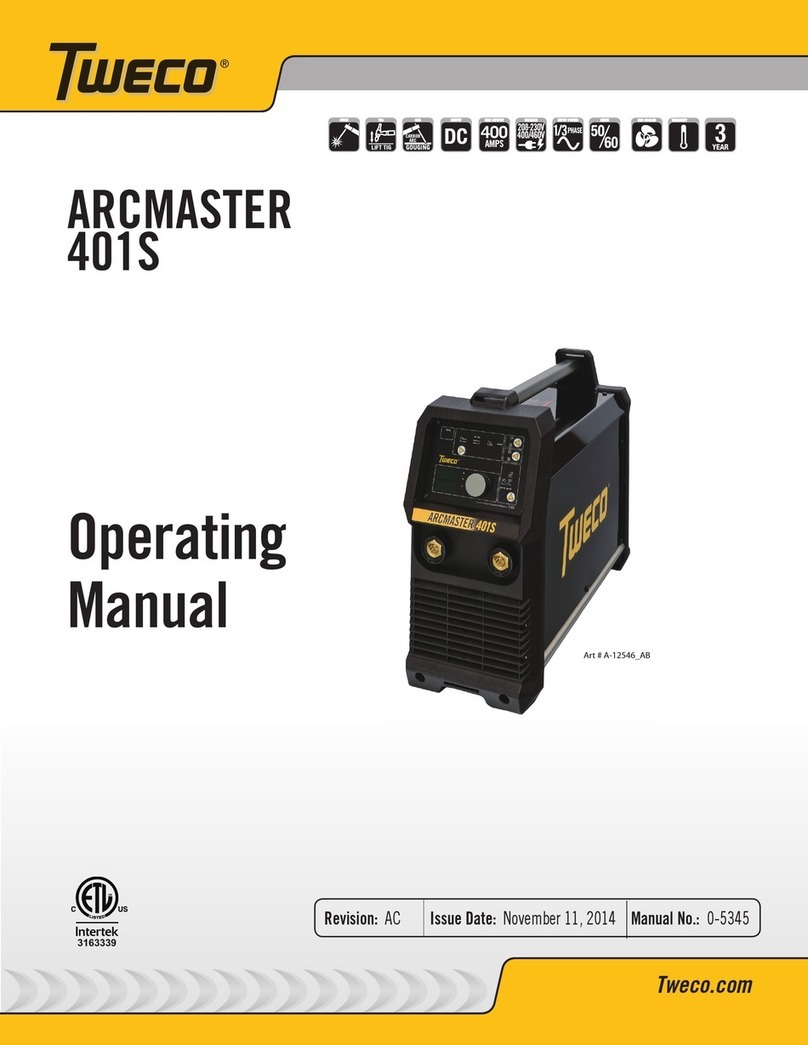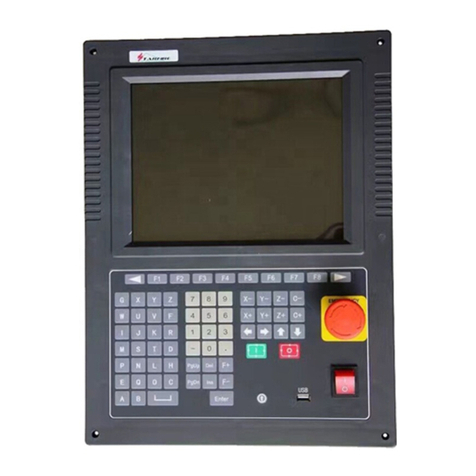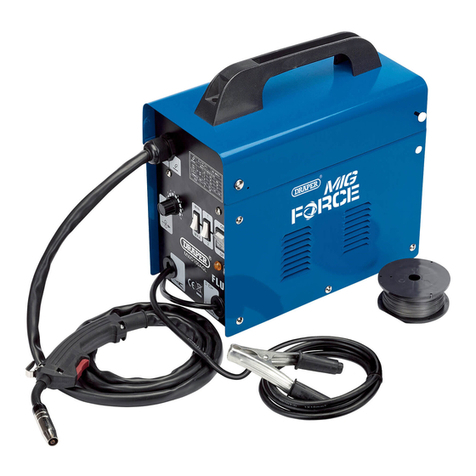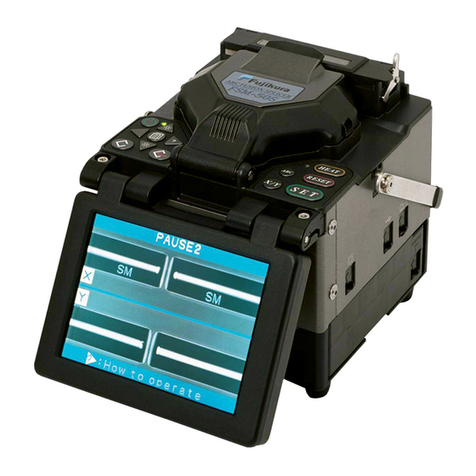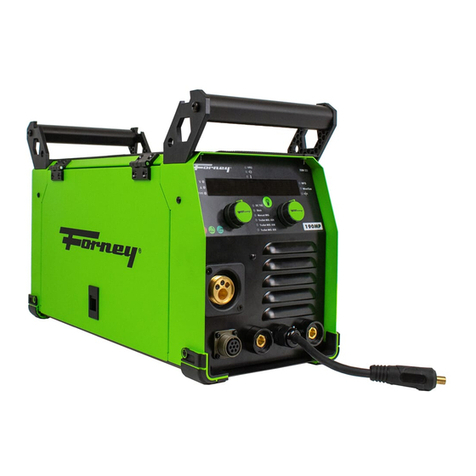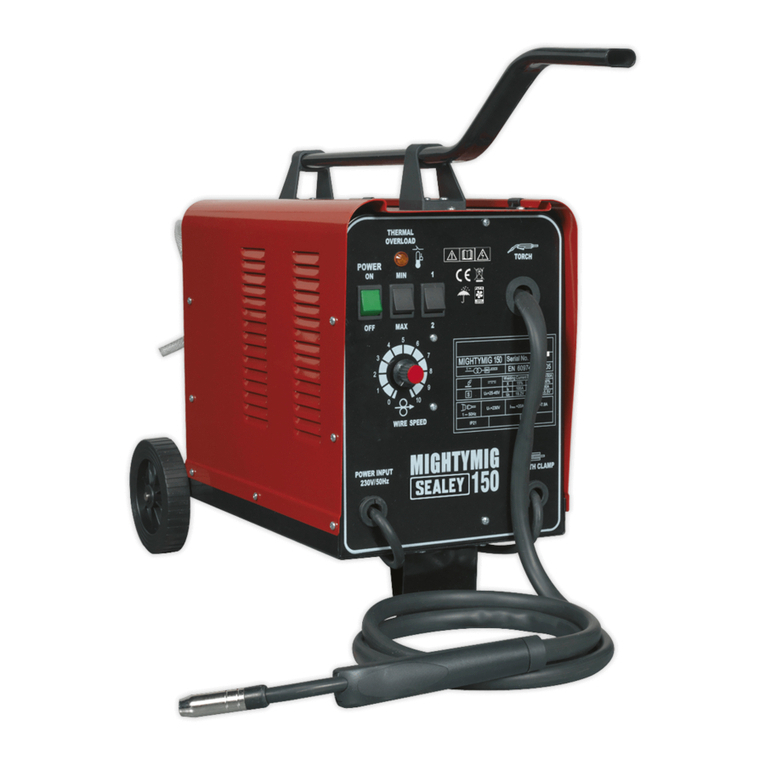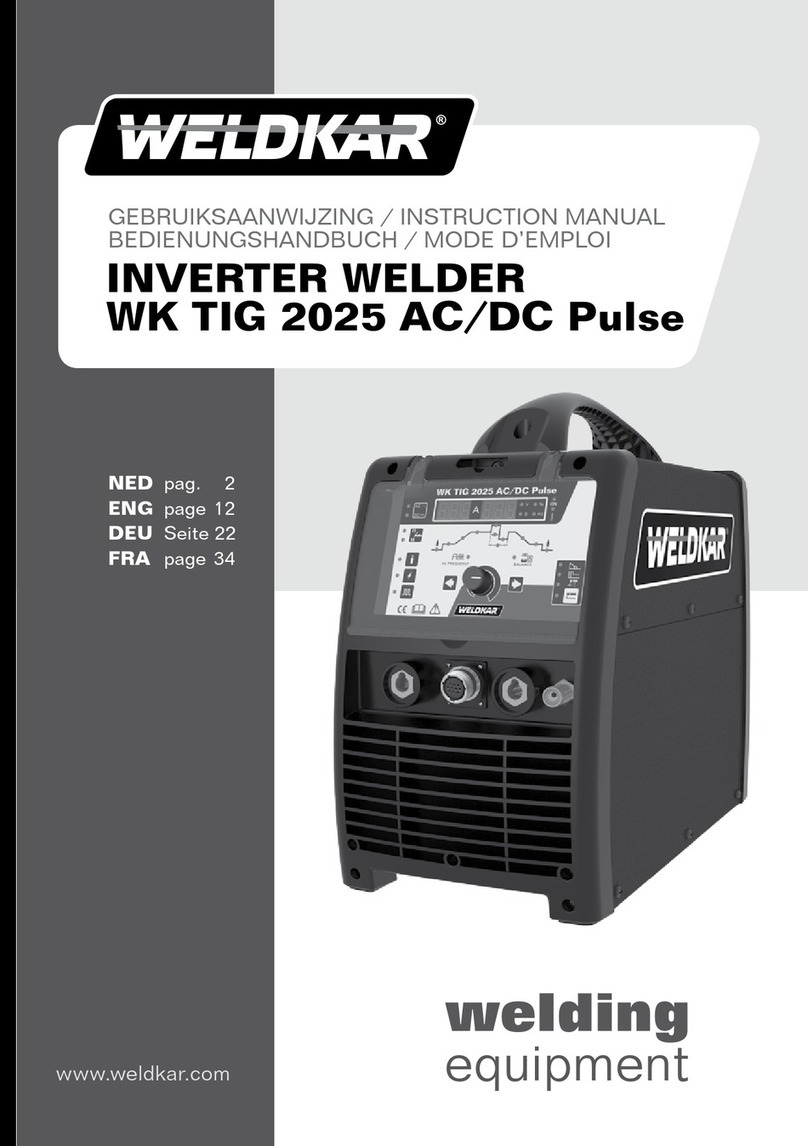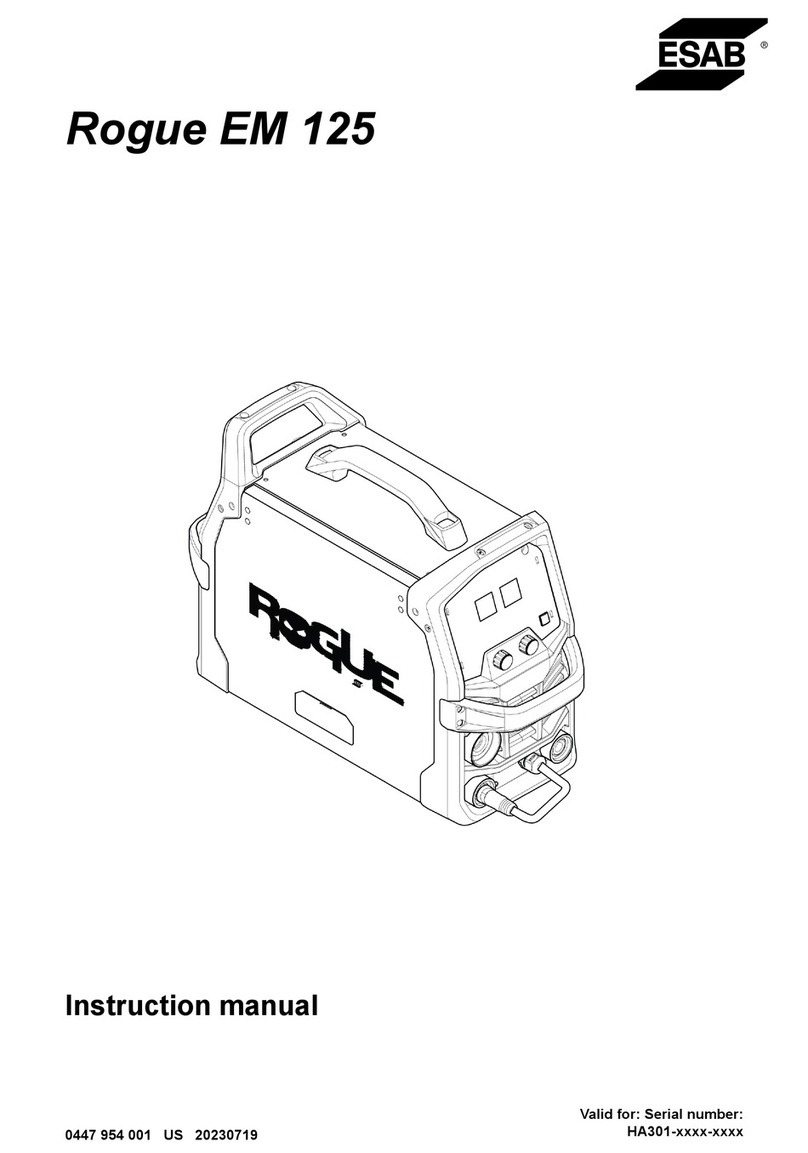Trumpf TruArc Weld 1000 User manual

Chapter 1
Safety
1 Safety concept 1‐3
2 Regulations and guidelines 1‐5
3 Terms 1‐6
4 Operational safety 1‐7
4.1 Intended use 1‐7
4.2 Significant change to the machine 1‐8
4.3 Authorized personnel 1‐8
5 Hazards 1‐9
5.1 Mechanical dangers 1‐9
Dangers of slipping, tripping or falling 1‐9
Moving robot axes 1‐9
Tilting and falling workpieces 1‐10
B1154en 2020-09-01 Safety 1‐1

Sharp-edged workpieces 1‐10
Wire feed from the welding torch 1‐10
5.2 Dangers from electricity 1‐10
Dangers due to the open electrical cabinet 1‐11
Electrical voltage on the welding wire 1‐11
5.3 Thermal dangers 1‐11
Fire hazard 1‐11
Dangers due to fire 1‐12
Danger due to flying sparks 1‐12
Hot surfaces and workpieces 1‐12
5.4 Danger due to materials and substances 1‐12
Hazardous materials 1‐12
5.5 Noise hazards 1‐14
Increased sound pressure level through
pneumatics
1‐14
5.6 Combination of dangers 1‐14
Dangers when using the welding torch 1‐14
Dangers in the event of a network con-
nection
1‐15
6 Measures to be taken by the manufacturer 1‐16
6.1 Noise protection 1‐16
6.2 Danger zones and safeguarding 1‐16
6.3 Safety-relevant signs on the machine 1‐23
7 Organizational measures to be taken by
the user
1‐25
7.1 Training and instructing operators 1‐25
7.2 Due diligence when operating the machine 1‐25
7.3 Water protection 1‐26
7.4 Spare parts, accessories, software, operating
materials
1‐27
8 Disassembly and disposal 1‐28
1‐2Safety 2020-09-01 B1154en

1. Safety concept
The "Safety" chapter describes the safety concept of the
machine. It specifies the guards and the manufacturer's design
measures for safe operation of the machine.
It points out dangers when handling the machine and specifies
measures taken by the user to avoid possible dangers.
The "Hazards" section is based on the manufacturer's risk
assessment and describes the residual risk. The user must take
measures to prevent the hazards. The measures must comply
with the national safety and accident prevention regulations of
the country in which the machine is operated.
Dangerous points on the machine are marked with warning
signs and information plates.
The operator's manual contains warnings, which warn of dan-
gers and specify measures to avoid these dangers.
Warnings have the following structure:
■The signaling word designates the degree of a danger.
■The danger description specifies the danger and possible
consequences if attention is not paid to the danger.
■The measures for prevention of the danger are planned.
Example of a warning:
Risk of fatal injury due to falling load!
ØObserve safety regulations for the handling of heavy loads.
ØNever walk under a suspended load.
ØUse certified tackle and means of transportation of sufficient
size.
ØEmploy qualified technicians to transport the machine.
ØCarry out transport in accordance with the transport regula-
tions.
A warning contains signaling words that are explained in the fol-
lowing table:
Signaling word Description
DANGER If the dangerous situation is not prevented, death or
serious injuries will result.
WARNING If the dangerous situation is not prevented, death or
serious injuries could result.
B1154en 2020-09-01 Safety concept 1‐3
Chapter Safety
Warning sign and
information plates
Warnings
DANGER

Signaling word Description
CAUTION If the dangerous situation is not prevented, light inju-
ries could result.
NOTICE If the situation is not prevented, damage to property
could result.
Signaling words Tab. 1-1
1‐4Safety concept 2020-09-01 B1154en

2. Regulations and guidelines
TRUMPF issues an EU declaration of conformity for the auto-
mated welding cell in accordance with EC Machinery Directive
2006/42/EC. The automated welding cell is a complete machine.
The standards applied by TRUMPF are stated in the EU declara-
tion of conformity supplied.
With the CE marking, TRUMPF confirms compliance with the fol-
lowing EU directives:
■EC Machinery directive 2006/42/EC.
■Directive about electromagnetic compatibility 2014/30/EU.
The CE marking is on the nameplate.
B1154en 2020-09-01 Regulations and guidelines 1‐5
Laws and guidelines in the
EU

3. Terms
Term Description
User The user is the person who is responsible for the operation of the machine or system
and has the authority to issue orders to employees.
Machine A machine (complete machine) according to the definition in the EC Machinery Direc-
tive is the entirety of interconnected assemblies and components, of which at least
one component is movable. A machine is intended for a specific application.
Personal safety equip-
ment (PPE)
Equipment intended to be used or worn by persons in order to protect themselves
against hazards to their safety and health.
Components of personal protective equipment:
■ Protective clothing (flame retardant, insulating, covers the whole body).
■ Closed safety shoes.
■ Safety glasses
Additional personal safety equipment when welding:
■ Safety shield for eyes and face with filter insert according to regulations to protect
against UV rays, heat and flying sparks.
■ Welding gloves.
Terms Tab. 1-2
1‐6Terms 2020-09-01 B1154en

4. Operational safety
The machine can result in the following dangers if it is used
inappropriately or for purposes other than those intended, or
else if it is not safe to operate:
■Dangers to the safety of the personnel.
■Damage to the machine and other material assets of the
user.
4.1 Intended use
The user may use the machine in the industrial and commercial
sector.
Installation, operating and transport conditions defined by
TRUMPF must be adhered to and maintenance work must be
carried out in accordance with the Operator's manual. The user
must observe the specifications of the country in which the
machine is being operated as well as national and regional
safety and accident prevention regulations.
The user may use the machine to weld mild steel, aluminum
and stainless steel. MAG/MIG welding and CMT welding are
authorized welding processes.
The following is not permitted:
■Any working procedure that impairs the safety.
■Operation of the machine with a welding device that was not
delivered with the machine. Operation of the machine with
another welding device is only permitted after consultation
with TRUMPF.
■Operation of the machine in explosive or corrosive atmos-
phere.
■The processing of materials that do not comply with the
defined specifications.
Any use going beyond this is considered to be unauthorized
use. TRUMPF is not liable for any damage, especially personal
injury and damage to property as well as production failures
resulting from this. The risk is borne solely by the user. The war-
ranty will be voided.
If the user changes or modifies the machine, then the user
rather than TRUMPF is responsible for the safety of the
machine.
B1154en 2020-09-01 Operational safety 1‐7
Machine
Disclaimer

4.2 Significant change to the machine
The machine is delivered as a complete machine, as defined by
the EC Machinery Directive, with a EU declaration of conformity.
The machine is operationally safe at the time of commissioning.
The user can produce goods with the machine as intended.
After commissioning, the responsibility for the safety of the
machine is transferred from the manufacturer to the customer.
4.3 Authorized personnel
■Operation in automatic mode may only be carried out by
authorized and instructed personnel.
■Installation work, connection, setting and maintenance work
may only be carried out by authorized, trained and
instructed personnel.
■Qualified personnel may do the following:
− Transporting the machine and its components to the
installation site.
− Carry out work at the pneumatic and electrical modules.
− Perform work on the shielding gas system.
− Disassemble the machine and its components.
■Program creation and testing in the manual and program
test operating mode may only be carried out by an
instructed welding specialist.
1‐8Operational safety 2020-09-01 B1154en
Delivery condition

5. Hazards
The "Hazards" section is based on the manufacturer's risk
assessment and describes the residual risk. The user must take
measures to prevent the hazards.
5.1 Mechanical dangers
Dangers of slipping, tripping or falling
Slipping, tripping or falling!
Risk of injury.
ØDo not climb or climb over the components in the safety
cabin.
ØWhen entering the safety cabin, pay attention to section
tube on the safety doors.
ØDo not climb onto the welding table.
ØPay attention to cables on the foot switch.
ØRemove leaking cooling fluid immediately.
Moving robot axes
During teaching and setup work there is a risk of crushing and
risk of impact through the movement of the robot axes.
Risk of injury due to movements of the robot axes!
ØKeep an adequate distance from the robot.
ØOnly carry out teaching and setup work at a reduced speed.
ØDo not step between the robot, moving components and
other obstacles.
ØBefore initiating a robot movement ensure that no one is
within reach of the robot.
B1154en 2020-09-01 Hazards 1‐9
CAUTION
WARNING

Tilting and falling workpieces
Tilting or falling workpieces!
Head and hand injuries.
ØOnly process workpieces up to a max. size of 2000 x 600 x
600 mm (78.7 x 23.6 x 23.6 in).
ØPlace workpieces statically with clamping fixtures (e.g. col-
lets, etc.) and bring them into a position with a secure
center of gravity.
ØPeople who are not involved may not stay in the danger
area.
Sharp-edged workpieces
Workpieces have sharp edges!
Cutting injuries of the hands.
ØWear protective gloves.
Wire feed from the welding torch
After opening the anti-glare protection or one of the safety
doors, the robot remains in its current position.
If the robot is not in home position, there is a risk of stab inju-
ries when working on the wire of the welding torch, e.g. when
cutting the wire at the feed.
Wire tip in working area!
Stab injuries to hands and eyes!
ØWear protective gloves.
ØWear safety goggles.
5.2 Dangers from electricity
Work on electrical equipment and live parts is only allowed to
be carried out by trained qualified personnel.
1‐10 Hazards 2020-09-01 B1154en
CAUTION
CAUTION
CAUTION

Dangers due to the open electrical cabinet
The electrical cabinet may be opened only by an electrician.
Electrical voltage!
Electric shock!
ØKeep the electrical cabinet closed.
ØBefore opening the electrical cabinet: turn off the MAIN
SWITCH and secure it against being switched back on
again. Wait for the discharging time (at least 5 minutes).
Electrical voltage on the welding wire
The welding wire and drive parts are under welding voltage dur-
ing operation.
Danger due to electric voltage on the welding wire!
ØWear dry, insulating gloves.
ØUse insulating surface against floor and working area.
ØDo not touch wire electrode with bare hands.
ØWait until the welding wire has cooled down.
ØNever immerse in fluids to cool it down.
5.3 Thermal dangers
Fire hazard
Firefighting must be performed only by personnel who are
trained to do so and who are using appropriate protective equip-
ment. If there is a risk of self-endangerment, or if the fire threat-
ens to escalate, the fire department must be called.
The following fire extinguishers should be kept ready for fire pro-
tection:
■CO2 hand-held fire extinguisher (fire classification B) with 6
extinguishing units for fires in the compact dust extractor
and for fires at the machine (except for metal fires).
■Hand-held fire extinguisher (fire classification D) for metal
fires.
■Metal bucket (at least 20 l) with dry sand.
B1154en 2020-09-01 Hazards 1‐11
DANGER
WARNING

Dangers due to fire
Fire!
Serious injuries.
ØIn the event of fire, leave the danger zone and take fire pro-
tection measures.
Danger due to flying sparks
Severe injuries due to fires and explosions.
ØDo not place any flammable materials on the welding table.
ØPlace flammable materials at least 11m (36ft) away from the
electric arc or cover with a verified cover.
ØKeep suitable and verified fire extinguishers ready at hand.
ØDo not weld on gas, fuel or mineral oil tanks.
Hot surfaces and workpieces
After welding, the welding table and workpieces, as well as the
welding torch and other equipment components become very
hot. There is a risk of burns during removal of the workpieces
and maintenance work.
Risk of burns from hot workpieces, hot surfaces, welding
torch and other equipment components after welding!
ØWear personal protective equipment.
ØWait for the cooling phase to pass (at least 5 minutes).
5.4 Danger due to materials and
substances
Hazardous materials
Processing generates smoke and particles. Heavy metal vapors
can arise if metals are processed. They can damage body tis-
sues and organs.
1‐12 Hazards 2020-09-01 B1154en
WARNING
WARNING
WARNING

In the case of hazardous substances, TRUMPF only indicates
the sources of danger. The user must estimate the dangers
caused by a raw material. The user must check and estimate
the required measures.
When the machine is switched off the valve for the main gas
supply must be closed.
During welding, gas and particles that are hazardous to
health can escape.
Gas and particles can get into the airways.
ØOnly use the machine with an exhaust system that works
properly.
During welding and processing of stainless steels gas and
particles are produced that are hazardous to health, and
which cannot be filtered via the integrated exhaust system.
Gas and particles can get into the airways.
ØDo not suction any stainless steels, such as V2A, V4A, etc.,
with the integrated exhaust system of the mobile welding
cell.
ØWeld stainless steels exclusively with a separate exhaust
system to outside.
ØObserve the national provisions for processing stainless
steels.
During maintenance work, gas and particles that are
hazardous to health can escape.
Irritation and diseases of the airways may occur.
ØWear a breathing mask when performing maintenance oper-
ations on the integrated exhaust system.
Shielding gas escaping uncontrollably
Danger of suffocation
ØMake sure there is a sufficient fresh air supply.
ØCheck the main gas supply of the shielding gas for uncon-
trolled gas leakage prior to every start-up.
ØClose gas tap when not in operation.
B1154en 2020-09-01 Hazards 1‐13
WARNING
WARNING
WARNING
WARNING

5.5 Noise hazards
Increased sound pressure level through
pneumatics
For certain processes, the A-weighted sound pressure level of
the system may exceed 71 dB. In this case, persons in the area
surrounding the machine will be exposed to increased noise pol-
lution.
Exceeding noise level.
Hearing damage
ØWear hearing protection from noise level > 80 dB (A).
ØSet pneumatic pressure to max. 6 bar.
5.6 Combination of dangers
Dangers when using the welding torch
High temperatures on welding torch and other equipment
components.
Severe burns to skin!
ØWait for the cooling phase to pass (at least 5 minutes)
before carrying out work on welding torch or other equip-
ment components.
ØWear protective gloves.
Electric arc in case of MIG and MAG welding.
Risk of severe skin burns and damage to the eyes.
Impairment or even loss of eyesight possible!
ØWelding with anti-glare protection open only with safety
glasses.
ØDo not climb on the machine during the welding process.
ØDo not look into the safety cabin from above.
1‐14 Hazards 2020-09-01 B1154en
CAUTION
WARNING
WARNING

Dangers in the event of a network
connection
The electrical cabinet may be opened only by an authorized spe-
cialist.
Note
It is possible to connect to the customer network using the FAB
interface option.
B1154en 2020-09-01 Hazards 1‐15

6. Measures to be taken by the
manufacturer
6.1 Noise protection
The A-weighted emission sound pressure level at the worksta-
tion of the personnel is between 70 dB(A) and 80 dB(A). The
operating conditions of the machine during the measurement,
the measuring method and the exact measurement results of
the A-weighted emission sound pressure level can be taken
from the noise measurement report.
6.2 Danger zones and safeguarding
The danger zone of the machine is protected by guards. The
machine may only be operated with an active guard.
1‐16 Measures to be taken by the manufacturer 2020-09-01 B1154en

1 Rear safety doors (hinged
doors)
2 Lateral safety doors (sliding
doors)
3 Anti-glare protection
4 EMERGENCY STOP push-but-
ton
5 Operating unit with foot switches
6 Operating-mode key switch
7 Upper cover with exhaust hood
8 Operating elements on the
robot welding arm
9 Power source
10 Exhaust system
11 Extendible partition wall
Danger zones and safeguarding device Fig. 105422
The operating-mode key switch is located laterally on the central
operating unit.
Unauthorized operation of the machine in the operating
modes "Manual mode" and "Program test" by operating
personnel!
Injuries due to unintended use of the machine.
ØRemove the key in automatic mode and store it safely.
ØHave setting and test work performed by instructed welding
specialists.
B1154en 2020-09-01 Measures to be taken by the manufacturer 1‐17
Operating-mode key switch
WARNING

1 Manual mode
2 Program test
3 Automatic mode
Key switch positions Fig. 105430
The main switch is used to switch the machine on and off. The
main switch can be secured with a padlock against being
switched back on again.
The main switch has two switch settings:
Switch setting 0The machine is switched off and the voltage
supply of the machine is interrupted .
Switch setting 1The machine is switched on.
Tab. 1-3
The main switches prevent the machine from starting unintention-
ally:
■Pneumatic: main valve with stop
■Shielding gas: main valve (ball valve) with stop
■Electric: lockable main switch
EMERGENCY STOP push-buttons are located at the following
points on the machine:
■On the central operating unit.
■On the mobile operating unit.
1‐18 Measures to be taken by the manufacturer 2020-09-01 B1154en
Main switch
Power isolation switches on
the machine
EMERGENCY STOP push-
button

1 EMERGENCY STOP push-button, mobile operating
unit
2 EMERGENCY STOP push-button, central operating
unit
EMERGENCY STOP push-button Fig. 105429
EMERGENCY STOP has the following effect:
■All axis motions stop.
■All drives are switched off electrically.
■The power supply of the power source is interrupted.
■The 24 V control voltage is maintained.
■The shielding gas supply valves are closed.
■The anti-glare protection movements and extendible partition
wall stop.
Lateral and rear safety doors prevent entry into the danger zone
in automatic mode.
The safety doors are electronically monitored by safety contacts.
B1154en 2020-09-01 Measures to be taken by the manufacturer 1‐19
Safety doors

1 Safety contacts for door monitoring
Safety contacts Fig. 105427
If one or several of the safety doors are opened during opera-
tion, the robot is stopped and transferred into a safe state.
A restart of the machine has to be acknowledged again.
A two-part anti-glare protection at the front of the machine pro-
tects the operator from optical radiation and prevents access to
the danger zone in automatic mode.
The anti-glare protection must be manually closed in automatic
mode before a welding process is started. For program tests, a
program can be started and be welded with the glare protection
open. In manual mode, only the robot can be moved with the
anti-glare protection open.
To reduce the risk of people in the machine being overseen and
becoming trapped, the anti-glare protection opens automatically
when a safety door is opened. The robot is stopped and trans-
ferred into a safe state. Acknowledgement with the START /
RESET button must be carried out.
1‐20 Measures to be taken by the manufacturer 2020-09-01 B1154en
Anti-glare protection
Table of contents
Popular Welding System manuals by other brands
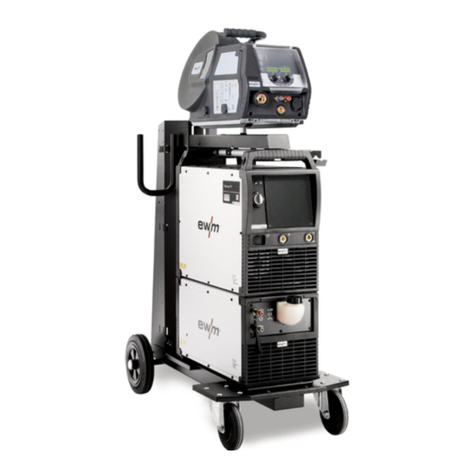
EWM
EWM MT221-301G F2 operating instructions

Elektra Beckum
Elektra Beckum 170 - 230 Amp Models Operating instruction
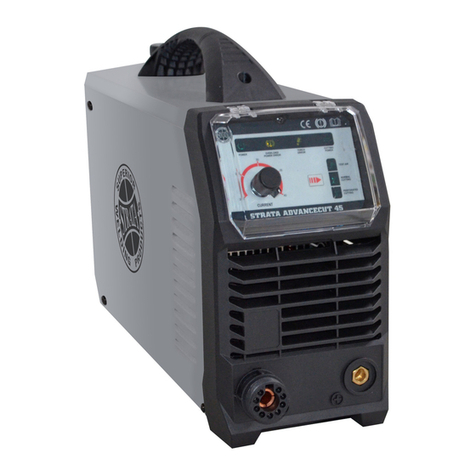
Strata
Strata ADVANCECUT 45 operating instructions
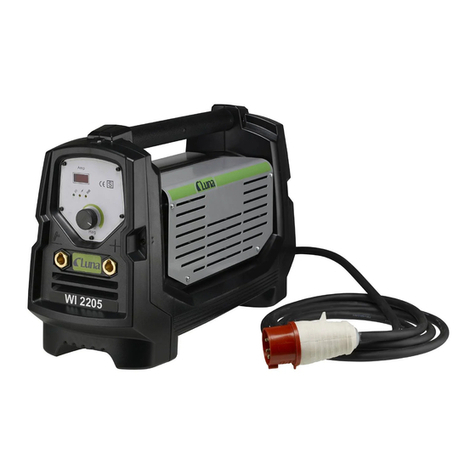
Luna
Luna WI 1505 manual

Lincoln Electric
Lincoln Electric K3924-1 Operator's manual

Miller Electric
Miller Electric Tandem Systems owner's manual
